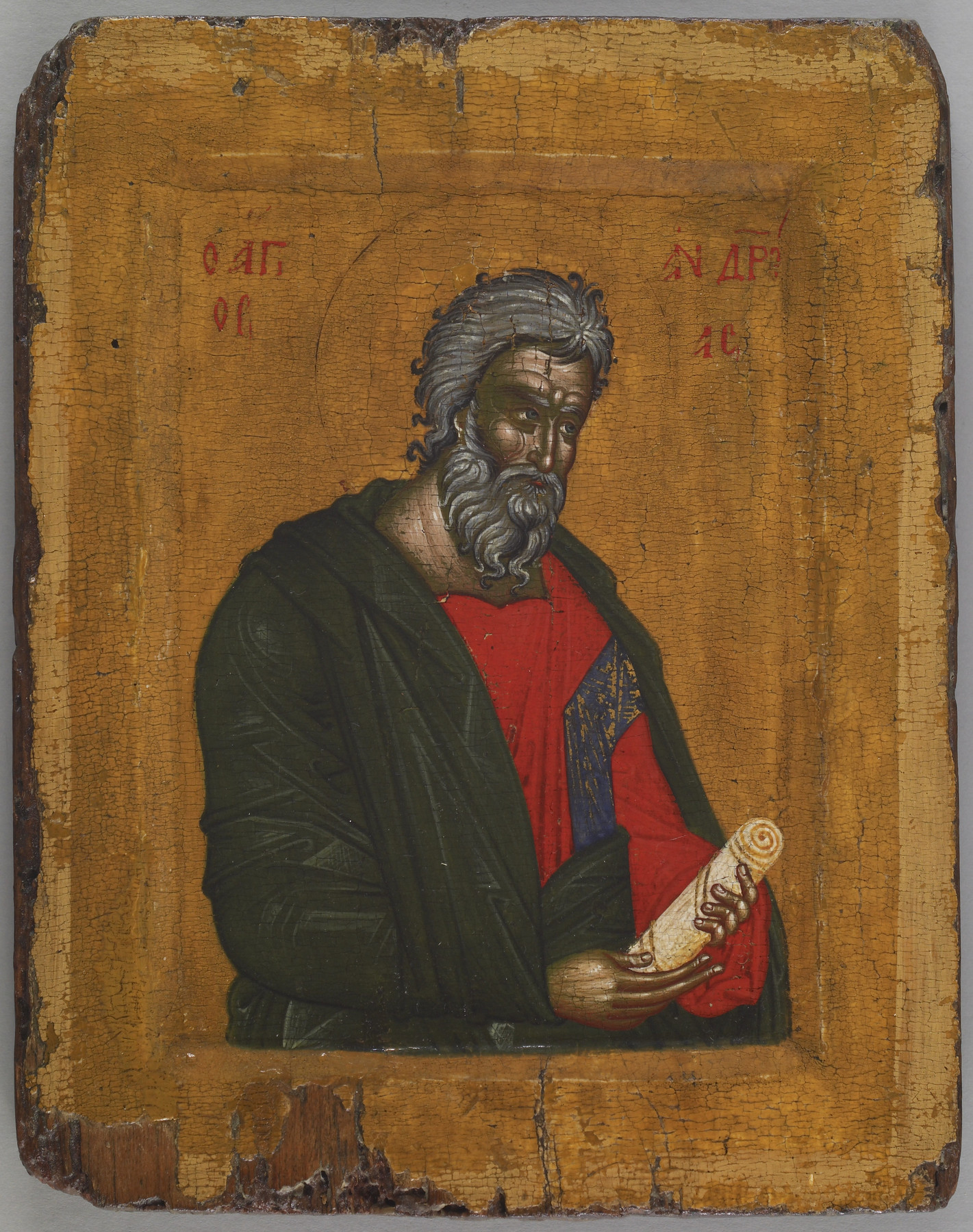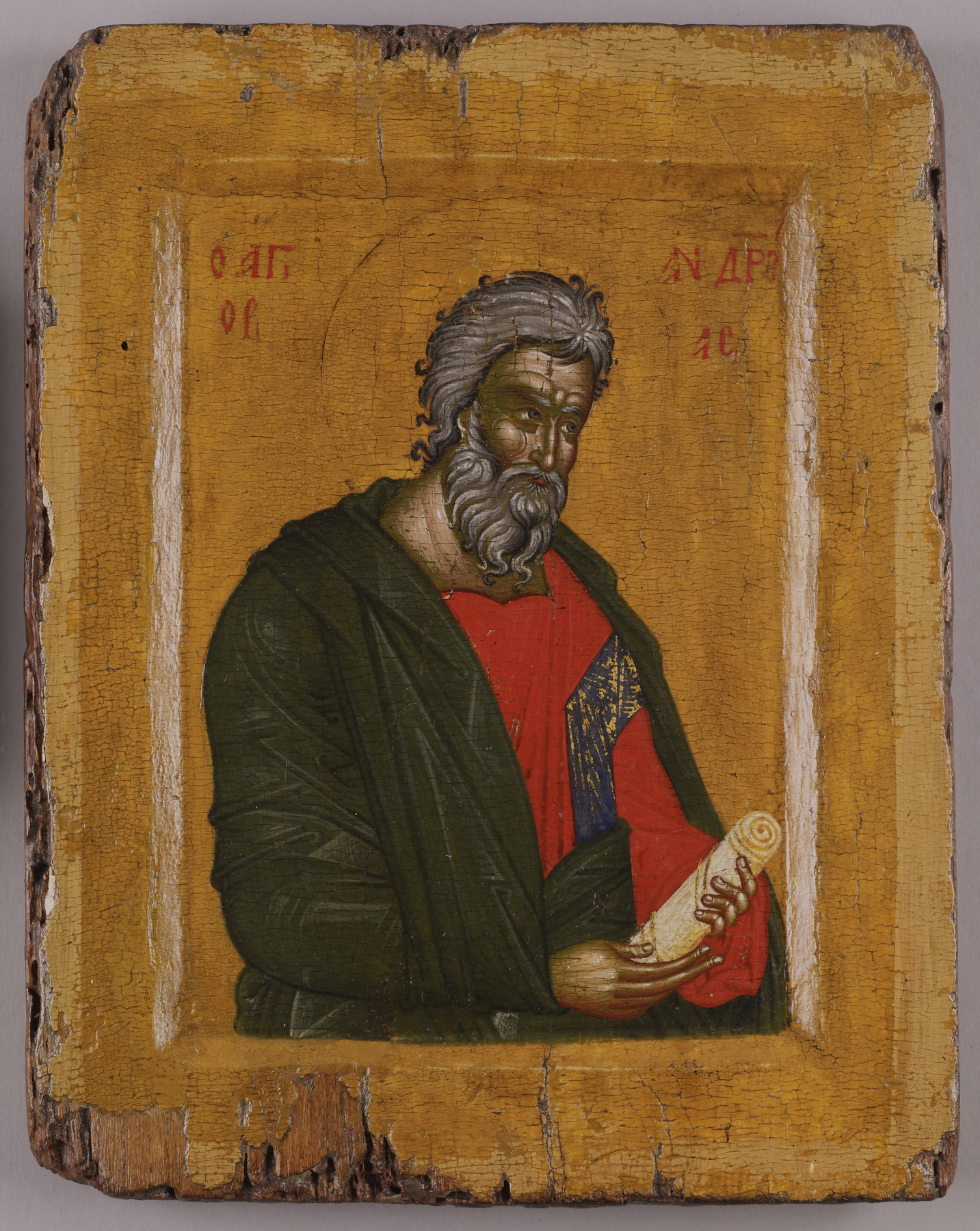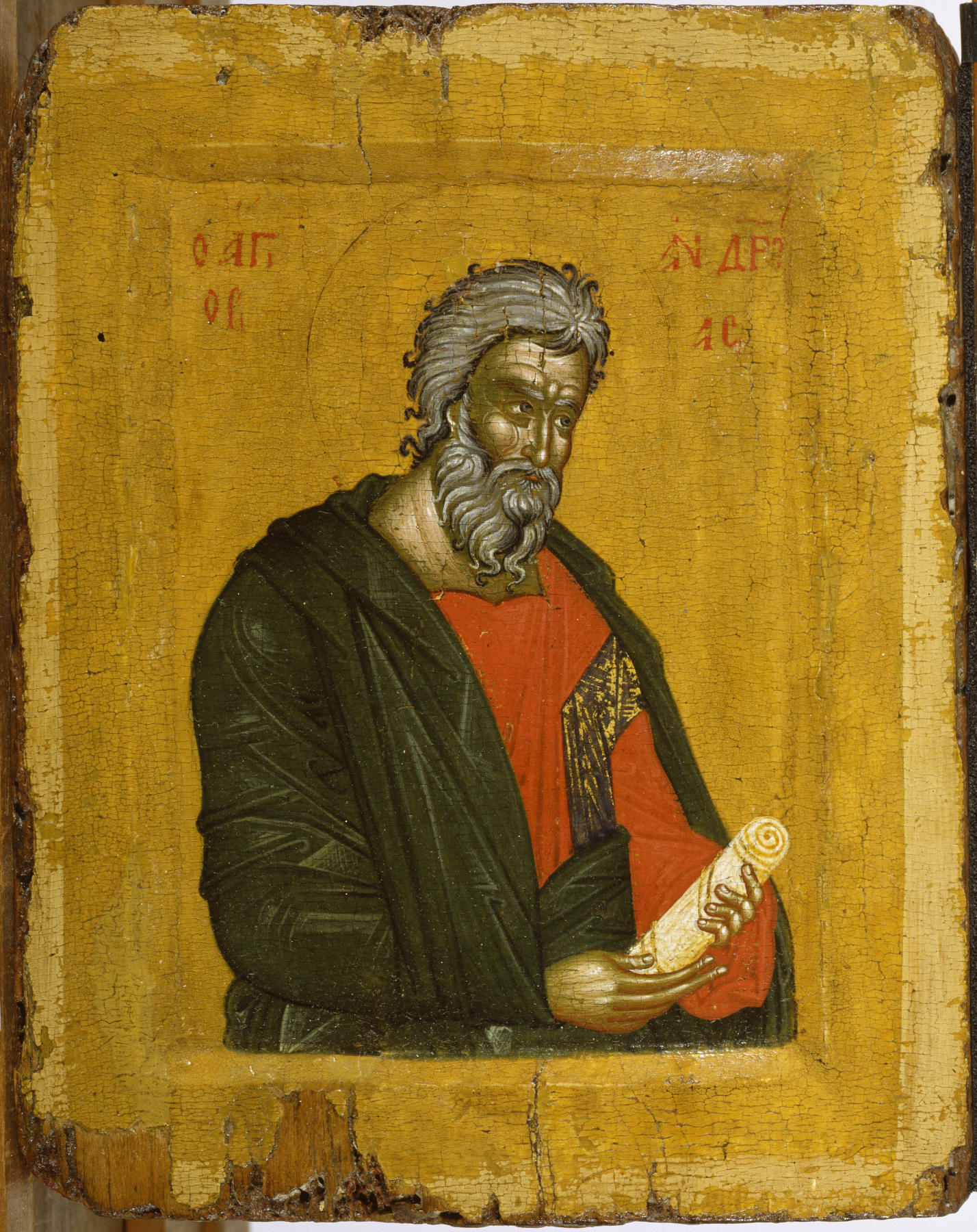Saint Andrew
(Byzantium and Early Russia)
Saint Andrew, holding a scroll, looks intently to his left, indicating that the panel once may have formed part of a group of icons with Christ at the center. It may have been placed on the upper tier of an "iconostasis," the screen dividing the sanctuary from the nave in an Orthodox Church. The color scheme of the icon is unusual in its use of extremely bright colors for the saint's robe and a mustard yellow - instead of gold - for the background.
Provenance
Provenance (from the French provenir, 'to come from/forth') is the chronology of the ownership, custody, or location of a historical object. Learn more about provenance at the Walters.
Alexandre Polovtsoff (Aleksandr Aleksandrovich Polovtsov), Paris, by purchase; Henry Walters, Baltimore, 1930, by purchase; Walters Art Museum, 1931, by bequest.
Exhibitions
| 2017-2018 | Fabergé and the Russian Crafts Tradition: An Empire's Legacy . The Walters Art Museum, Baltimore. |
| 1988-1990 | Holy Image, Holy Space: Icons and Frescoes from Greece. The Walters Art Gallery, Baltimore; Center for the Fine Arts, Miami; Kimbell Art Museum, Fort Worth; Fine Arts Museums of San Francisco, San Francisco; The Cleveland Museum of Art, Cleveland; The Detroit Institute of Arts, Detroit; Virginia Museum of Fine Arts, Richmond. |
Conservation
| Date | Description | Narrative |
|---|---|---|
| 1/14/1960 | Treatment | examined for condition; other |
Geographies
Greece, Macedonia (Place of Origin)
Measurements
H: 10 1/4 × W: 8 3/16 × D: 1 1/4 in. (26 × 20.8 × 3.2 cm)
Credit Line
Acquired by Henry Walters, 1930
Location in Museum
Centre Street: Third Floor: Byzantine, Russian, and Ethiopian Icons
Accession Number
In libraries, galleries, museums, and archives, an accession number is a unique identifier assigned to each object in the collection.
In libraries, galleries, museums, and archives, an accession number is a unique identifier assigned to each object in the collection.
37.559








